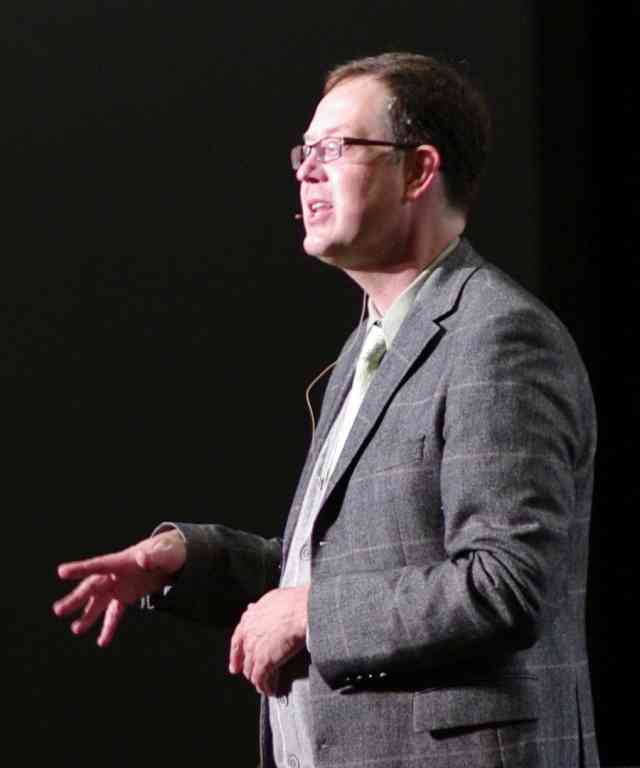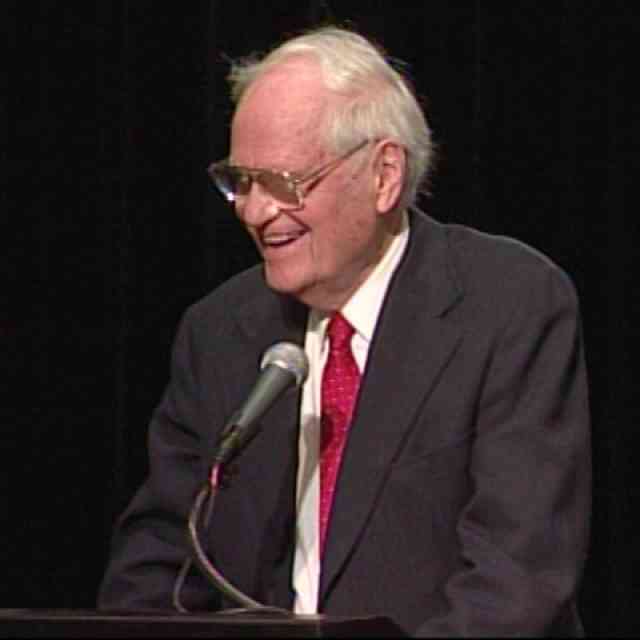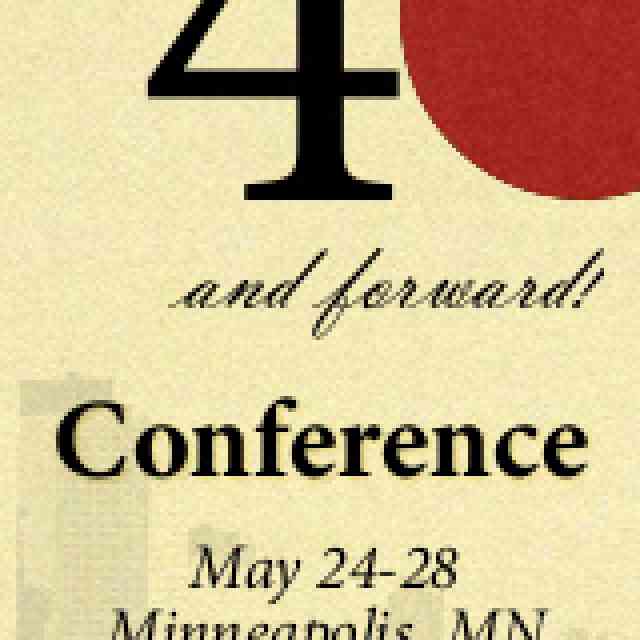
Brian Lewis gives a keynote
This year’s conference offered a veritable feast of information and inspiration, not only in rich instrument area presentations, but also in the General Sessions category. Each session was a gift from the presenter to all present. Through these brief summaries we hope to stir memories or pique your curiosity!
An Introduction to Baroque Style Ornamentation and Improvisation: A Participatory Workshop by Stacey Brady and Emily Anne Bowman
A great opening-night ice-breaker, the session was informative and fun as the group learned how to improvise in Baroque style.
Building a Suzuki Program on Mars, Venus, or Other Remote Locations, A Case Study: The Suzuki Association of Hawaii by Sheryl Shohet
Sheryl Shohet dealt with the challenges of developing a Suzuki program in a remote location, stressing the importance of networking and finding ways to expose students to many of the teachers and experiences that a student in a metropolitan area would have.
Improvisation Without Inhibition by Alice Kay Kanack
The role of the teacher is that of a facilitator who acts as a catalyst to the students’ creative exploration, while imparting theory and structural concepts in a supportive atmosphere of self-expression and freedom of choice.
What Does Latin America Have to Offer the Larger Suzuki Community? By Kelly Williamson, Caroline Fraser and Shinobu Saito
Kelly Williamson, Caroline Fraser and Shinobu Saito reported on specific ways in which Suzuki in Latin America is meeting its challenges through commitment, innovative programming and inspiration.
Baroque Ornamentation in Bach and Beyond—in Small Easy Steps by Kathleen and Thomas Schoen
Kathleen and Thomas Schoen explained the importance of musical ornamentation as it was used in the Baroque era to compensate for the dynamic limitations on many of their instruments. Suzuki violin and recorder repertoire were used to demonstrate common practices.
Setting Your Studio Up for Success: Strategies for Young Teachers by Ruth Marie Balance and Lucy Lewis
Topics addressed included the importance of young teachers establishing themselves as professionals to gain the respect of students and parents; the importance of communications; overcoming fears and intimidation felt by younger teachers; and some of the practicalities of setting up a successful studio.
From Studio to Home Without Getting Lost! by Nancy Lokken and Gail Johansen
Nancy Lokken and Gail Johansen discussed the importance of parents’ learning how to take effective notes for home practice, maintain them and use them for effective review. Among other topics discussed was how teachers can help students persevere when there are family problems.
40 Things I’ve Learned in 39 Years of Teaching Suzuki by Michiko Yurko
Michiko Yurko shared advice gathered from parents, students and teachers over the years. Among other ideas, she included these: be “choosey”—what to consider when accepting a new student; imagine Dr. Suzuki in your studio as you teach; hear everything, overlook a lot and fix one thing at a time; and believe in yourself—you are a student until you are 90.
Each Child’s Gift: Nurturing Strengths, Embracing Challenges by Jodi LaChance
Jodi LaChance described signs to help us identify learning disabilities and other disorders and suggested ways to work with these students. She reminded us to keep in mind Dr. Suzuki’s emphasis on “the importance of educating the human spirit.”
Music Reading in Suzuki Book 1? Yes, in a Natural Way! by Caroline Fraser
Caroline Fraser demonstrated through a video presentation how the musical symbol helps the child hear the sound, feel the rhythm, express the music, and thereby become “natural readers.”
Quality, Quanity, Qualia? Visual Learning and Suzuki Student Success by Elizabeth Guerriero
Elizabeth Guerriero described how she uses videos of lessons and home practice to help students learn to self-evaluate.
Copyright: What Can I Do and What Can I NOT Do? by Pam Phillips
Pam Phillips of Alfred Music Company described what is meant by public domain, copyright, and out of print designations and discussed what one should consider before making copies of music.
Three Mini Sessions (12 minutes each) focused on new ideas for building community within the Suzuki studio. In Project Poland! Concord Strings Performing Ensemble students Jacob Misener and Mary Margaret Annab shared cultural and social experiences gained from their groups trip to Poland and provided with some practical information on the organization of their trip.
In the mini-session Graduation Brings Suzuki Community Together, Christine Williams presented an overview of the graduation program used by the Suzuki Association of Utah—its achievements, benefits and practical aspects of the event, which is modeled after the graduation program in Matsumoto, Japan.
The final presenter was Sara Stephens Kotrba, who discussed a theoretical framework and concrete examples of ways to create community within the Suzuki triangle in Connecting the Triangles: Creating Community within the Studio.
“S, eh eh?”
Kathleen Schoen moderated a session during which Canadian conference participants discussed ideas and challenges and suggested a Canadian Teachers’ Forum on the SAA website.
Minuets and More: Dance in the Music of Bach by Joy Grimes, Emily Rideout and Nicholas Walker
After describing the structure of a minuet, gavotte and bourree, Joy danced while Emily and Nicholas accompanied. Then the audience joined in and learned the dances.
Nurtured by Love in the 21st Century by Dr. Susan Baer
Sue’s information-filled presentation helped put Dr. Suzuki’s ideas about talent, intelligence and character “in sync” with today’s research in the areas of neuroscience, psychology and sociology.
Sight Reading: Are you a Scout or a Jedi? by Bob Phillips
Bob Phillips presented a detailed presentation on sight reading and sequencing. His presentation was fun, fact filled and interspersed with anecdotes with teaching strategies for beginning and intermediate students, incorporating ideas for private studios and school ensembles.
Music Speaks Autism by Michelle Chinn-Cannon
Michelle described various forms of autism, provided specific teaching strategies and identified reasons why music education is especially effective in developing the brains of autistic children.
Keynote: Community Engagement: Bringing the Artistic Experience to a Public School Audience and Beyond
Keynoter Brian Lewis spoke about the importance of art and the need to make it accessible to every child. While including many engaging anecdotes in his presentation, he offered practical advice: exercises for improving one’s public speaking skills and ways to reach an audience—knowing who the audience is, knowing the subject matter well, keeping to a theme, and with student audiences, never talking down to the kids.
Pop/Rock/HipHop Music with Suzuki Teaching: Toward Greater Relevancy by Russell Fallstad
Russell Fallstad’s discussion on “Pop/Rock/Hiphop Music with Suzuki Teaching” included his own story of moving from a successful professional career to the realization that he wanted to reach a broader audience and cross more lines between musical genres. By allowing bridges to be built from our typically classical Suzuki studios towards other genres and the general public, and by growing our awareness of the emotional connection to whatever music we play, we are still exercising Dr. Suzuki’s principles.
Buffalo Suzuki Strings: Touring with a Mission by Mary Cay Neal
The Buffalo Suzuki Strings’ Friendship Touring Ensemble, which was founded through a commitment to Dr. Suzuki’s belief that music can change the world, has travelled to twenty-two countries under the leadership of director, Mary Cay Neal. Three former students of the BSS tour group, now Suzuki violin teachers, and one current student reflected on the impact the program has had on their lives. Mary Cay detailed the steps to building a tour group and arranging tours.
Variations on a Workshop Theme by Paule Barsalou and Sally Gross
Paule Barsalou and Sally Gross gave a concise and informative overview of various kinds of less typical workshops: a workshop focusing on a specific technique; a music festival focusing on high levels of solo performance; an improvisation workshop; non-instrumental workshops; and other ideas to stimulate new interest and instill long-term benefits.
SAA is 40! Revisiting the Past
William Starr, keynote speaker and one of our association’s founders, started with a visit to the past: the history and formation of the SAA.
Mr. Starr described what we have gained over the years from Dr. Suzuki: inspiration and guidance of body, mind and spirit; the formation of a worldwide family; Dr. Suzuki’s dream as our legacy; respect for the living soul; and much more.
Looking forward he spoke of the future in which, through Suzuki’s influence, we may see a renaissance of music, when the majority of people are musically trained. In following Suzuki’s examples and honoring his legacy, we must remember to be exemplary models of good human beings, not to stifle creativity, and to walk together into the future in unity.
[We look forward to presenting Mr. Starr’s keynote on our website in the near future!]
Transform Your Students into Cultural Ambassadors: Creating performing opportunities for your violin groups at all levels with music that inspires the audience by Ramona Stirling and Michael McLean
Ramona Stirling and Michael McLean generously shared information about the purposes of and outcomes from group travel and cultural exchanges. With videos to complement their presentation, the presenters spoke of choosing a tour theme; setting up shorter trips for younger children; practical tips on fund-raising, lodging, dress and outfit ideas; use of a tour company and much more.
Levels of Learning by Laura Larson and Deborah Kemper
Laura Larson and Deborah Kemper detailed four levels of learning a piece based on the teachings of Mr. Toshio Takahashi. This cross-instrument session included handouts, demonstration and group playing.
Suzuki Teaching is about Communicating With Parents by Gail Lange, Rita Hauck, and Mary Craig Powell
Gail Lange, Rita Hauck, and Mary Craig Powell shared their expertise in communicating with parents throughout the span of the child’s study. Gail described how she builds a cohesive Suzuki community where parents learn from each other as well as from the teacher. Rita explained how she nurtures the parents, making sure to encourage them and affirm their good efforts. Mary Craig focused on how she coaches parents to help their children musically beyond the notes, rhythms, and fingerings and develops the parent’s ability to discern the difference between musical and non-musical playing.
Overcoming Your Fear of the Three-Year-Old by Mark Mutter
Ideas for activities, lessons, forward teaching and group classes for very young students were among the topics Mark presented. He gave examples of the type of learners kids tend to be at age three and what works well for them—visual targets, movement, variety, clean cues, etc. He handed out stickers and the audience participated to show how the three-year-old would respond.
Tried and True, Fresh and New: Pre-Twinkle 40 Years Young by Carol Ourada, Carol Waldvogel and Carey Beth Hockett
Carol Ourada, Carol Waldvogel and Carey Beth Hockett gave a comprehensive run-down of a variety of Pre-Twinkle songs and activities to use with string players, but easily adaptable to other instruments. Activities were group for specific teaching goals.
Shinichi Suzuki: Environment Shapes the Man, His Method and His Teaching by Judy Bossuat-Gallic
From her personal experiences with Dr. Suzuki and much research, Judy Bossuat-Gallic shared many stories about Dr. Suzuki, showing how events in his life brought him to become the wonderful person and teacher he was.










